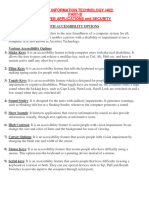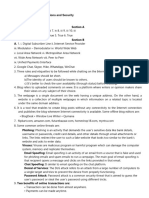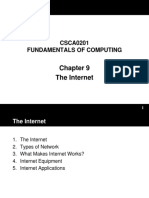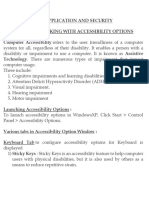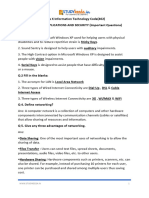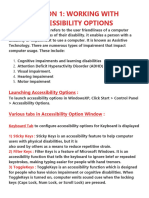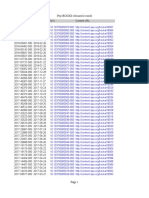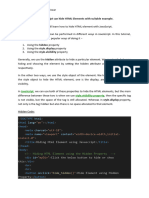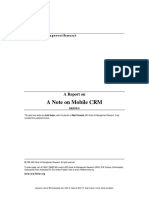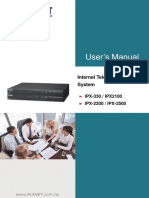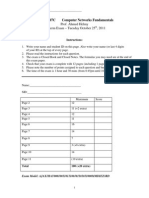0% found this document useful (0 votes)
12 views8 pagesChapter Notes Web Application
The document outlines the curriculum for Class X in Information and Technology, focusing on web applications and networking fundamentals. It covers various topics including special keys, types of networks (LAN, MAN, WAN), internet connectivity, instant messaging, online transactions, and internet security. Additionally, it addresses workplace safety, accident prevention, and the importance of a healthy lifestyle.
Uploaded by
sdurgavijaykumar1Copyright
© © All Rights Reserved
We take content rights seriously. If you suspect this is your content, claim it here.
Available Formats
Download as PDF, TXT or read online on Scribd
0% found this document useful (0 votes)
12 views8 pagesChapter Notes Web Application
The document outlines the curriculum for Class X in Information and Technology, focusing on web applications and networking fundamentals. It covers various topics including special keys, types of networks (LAN, MAN, WAN), internet connectivity, instant messaging, online transactions, and internet security. Additionally, it addresses workplace safety, accident prevention, and the importance of a healthy lifestyle.
Uploaded by
sdurgavijaykumar1Copyright
© © All Rights Reserved
We take content rights seriously. If you suspect this is your content, claim it here.
Available Formats
Download as PDF, TXT or read online on Scribd
/ 8













